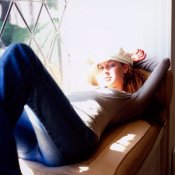To paraphrase the old saw regarding guns, incident meters don't kill good exposures, people do.

As with the use of a reflective meter, the use of an incident meter requires both an understanding of what it's doing, and a (tested) method of interpreting the reading. Part of the interpretation is considering the lighting arrangement, and thinking about what portion of the subject illuminated by each light source is going to be seen by the lens. Then, adjustments can be made to the actual exposure to balance between the light sources (or, that process may suggest that the lighting needs to be changed or supplemented).
When using an incident meter, I point the dome at the light source(s) from the subject position. Each of those readings will accurately render the portion of the subject illuminated by that source in it's true tonality -
if that light source is treated as the main light. The "main" is usually the light source producing the strongest reading, but that can be varied depending on what you wish to create, what the ratios are, etc. As the angle between the lens axis and the light source increases, increasingly less of the illuminated area of the subject will be seen by the lens. Thus, adjustments to the exposure suggested by the meter reading may be desireable.
Because the meter's dome may be seeing light from multiple sources, and will average between them, some care (or, shielding) is needed to discriminate between the multiple light sources. When all of the primary light sources are at less than 90° to the axis of the lens, i.e. on the "camera side" of the subject, it is that averaging process that prompts the usual recommendation to point the dome at the camera. For me, metering the light source, and then thinking about the lighting, produces better, more predictable results.
Back lighting is obviously a special circumstance, as the portion of the subject illuminated by a light behind them won't be seen by the camera - only hair highlights, and such, that are really transmitted light from the lens's perspective.
When mixing ambient light with flash, balance between them by using the f-stop to determine the contribution of the flash to the total exposure, and the shutter speed (at that aperture) to determine the contribution of the ambient light - within the limits of the shutter's sync speed, of course.
Note, too, that other aspects of the overall exposure, development, and printing process also affect what is the optimal exposure for any given image. Thus, people who use different procedures in development or printing may also use different metering techniques. The trick is to establish a consistent metering procedure that works for you and your overall process and "vision".







